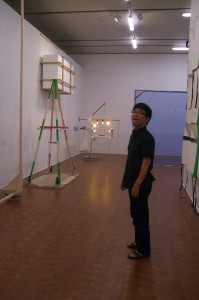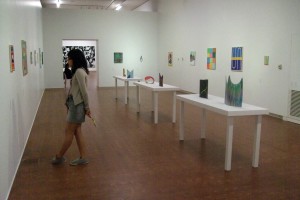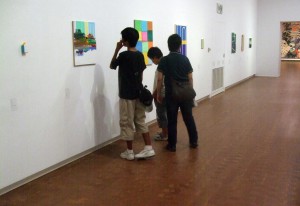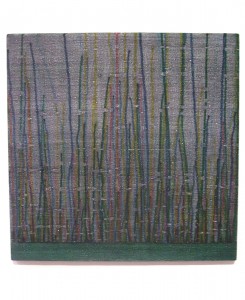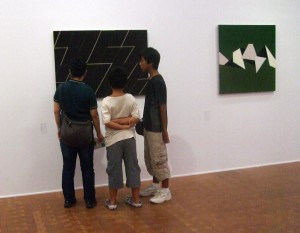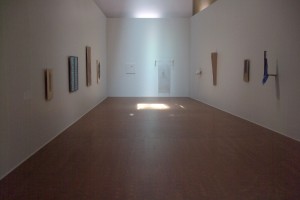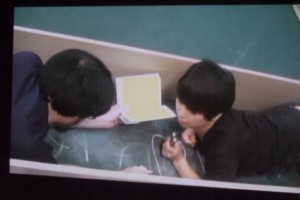Osaka feels like a very cool city, cosmopolitan. I often found myself thinking, any minute the locals will just break into something I can understand, but of course it didn’t happen.
Real Japanesque at the National Museum of Art, Osaka, looked at the practices of artists born after 1970. It comes way after super real and superflat. It felt international, contemporary, but was not looking to the West. An accompanying text actually suggested Western art practices were at an impasse—that contemporary art in the West hit a wall around 2000.
There were no black rooms, no heavy production or technically complicated stuff. The curators wrote that these artists were interested first in the idea of how a work of art could be ‘new’. What would that be like? They suggested that this newness, for these artists, is about returning to earlier Japanese art and configuring displays that assume an inquisitive audience.
Nine artists only, given huge airy independent spaces, more like a solo exhibition each—extraordinarily generous in terms of similar survey projects.
Speediest (but still slow) were the prop-sculptures of Maoya Kishi built in situ.
Middle-speed were the documented performance works of Taro Izumi. These were smart and seemed to allude to or expand on some of the conceptual thinking shared throughout Real Japanesque. Maybe everyone agreed with this guy. There was a library machine for writing and erasing. A Richter-effect machine. A face wipe-out machine. What was left of a live rabbit interview, and some strange Franz West-type toilet closet.
Slow-time though, was the body of Real Japanesque—it was Zen-time, jazz beat time, measured by full stops and commas, transitions by breath, colour registrations, stains and material translation.
Katsuhisa Sato, Teppei Soutome, Kazuyuki Takezaki, Mayuko Wada—Blinky Palermo babies. Beginning or ending, winding, aimless, blue window, noise, He and She, Kyo accent, Water side and is it the daybreak?—some titles.
With these last artists it was as though you passed a gate and the senses untangled and began to travel individually, your eyes dilated, picking out movements and hints from zone to zone. Making-time ravelled up as much as unravelled and opened and extended a sense of the present to include future and past.
It felt good.
Real Japanesque: the unique world of Japanese contemporary art, National Museum of Art, Osaka, 10 July – 12 September 2012.
